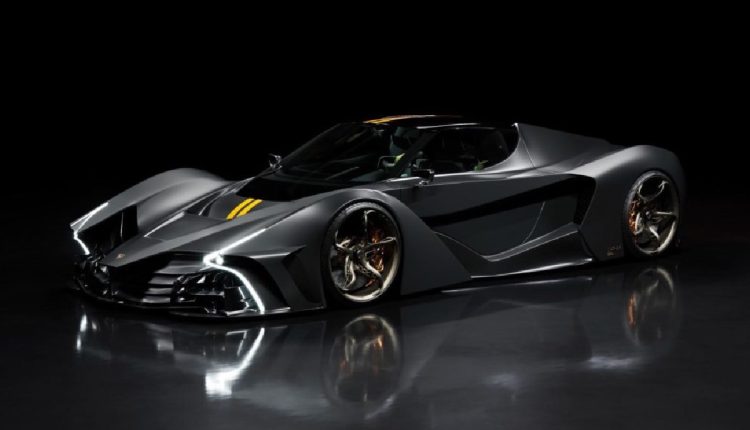Welcome to the Ultracar Era
The future of extreme performance isn’t coming—it’s already here. The Panopoulos Automotive CHAOS isn’t just another hypercar—it’s an ultracar, the first of its kind. Designed and manufactured in Greece by Spyros Panopoulos Automotive, the CHAOS redefines automotive limits with a mind-blowing 3,065 horsepower, aerospace-grade materials, and next-level engineering.
More than just speed, this machine symbolizes human ambition, technical genius, and futuristic vision. Here’s a closer look at the beast that goes beyond Bugatti, Ferrari, or Koenigsegg.
1. What is an Ultracar?
Spyros Panopoulos coined the term “ultracar” to describe a car that exceeds every traditional benchmark—speed, materials, technology, and rarity. Unlike hypercars that push boundaries, ultracars destroy them.
Key traits of ultracars:
-
Extreme horsepower (over 3,000 hp)
-
Aerospace-level composites
-
Ultra-lightweight construction
-
Ultra-limited production
-
Blistering acceleration beyond 0–100 km/h in under 2 seconds
The CHAOS is the first car in history to claim this title officially.
2. Engine & Power: A Monster Unleashed
Under its exotic skin, the CHAOS features a 4.0L V10 twin-turbo engine made using 3D-printed titanium and carbon fiber parts. It comes in two versions:
| Model | Horsepower | 0–100 km/h | Top Speed |
|---|---|---|---|
| Earth Version | 2,048 hp | 1.9 seconds | 500+ km/h (estimated) |
| Zero Gravity | 3,065 hp | 1.55 seconds | 500+ km/h (claimed) |
That makes the CHAOS not only the most powerful road-legal car ever made—but potentially the fastest production car on Earth.
3. Materials & Build: From Space to Street
The CHAOS is crafted using materials usually reserved for aerospace and military use:
-
Zylon and Carbon-Kevlar composites
-
Titanium-aluminide alloys
-
3D-printed Inconel components
-
Carbon fiber monocoque and body
The result? A curb weight as low as 1,272 kg, which is lighter than many family sedans—with more power than an F1 car.
4. Design: More Than a Car—It’s an Alien Machine
The design of the CHAOS screams aggression and speed. Every line, vent, and curve serves an aerodynamic purpose.
Highlights:
-
Jet fighter-inspired front with blade-like LED DRLs
-
Massive rear diffuser and multi-element active spoiler
-
Exposed carbon surfaces and transparent panels
-
A cabin filled with fighter jet displays and biometric interfaces
Even the wheels are hollow-core carbon fiber, 3D printed for maximum strength and minimal weight.
5. Interior: Digital, Biometric, and Futuristic
Inside, the CHAOS offers a fully digitized, AI-integrated cockpit:
-
Augmented Reality HUD
-
Biometric steering wheel with vitals monitoring
-
Touch-free gesture controls
-
NASA-grade bucket seats in custom composite blends
Everything in the cabin is tailor-made, offering a seamless fusion of performance and sci-fi aesthetics.
6. Price & Exclusivity: Not for the Faint of Wallet
This is not just a car—it’s a piece of mechanical art. And the price reflects that.
-
Earth Version: Approx. €5.5 million
-
Zero Gravity Version: Approx. €12.4 million
Only a handful of units will ever be produced, making it one of the rarest and most expensive cars ever offered to the public.
7. Why It Matters: Greece’s Gift to the Automotive World
The CHAOS is not from Italy, Germany, or the US. It’s Greek. Developed by engineer and innovator Spyros Panopoulos, the car represents a national and technological milestone.
It’s a reminder that innovation knows no borders. From a country known more for ancient ruins and mythology, Greece now has an engineering marvel that might redefine automotive history.
Conclusion: CHAOS is the Future, Now
With the CHAOS, Panopoulos Automotive isn’t just making a car—they’re making a statement. About what’s possible. About pushing boundaries. And about building the future today.
If the CHAOS delivers on even half of its promises, it could change everything we know about performance, speed, and automotive design.
Brace yourself—the ultracar age has officially begun.


Comments are closed.